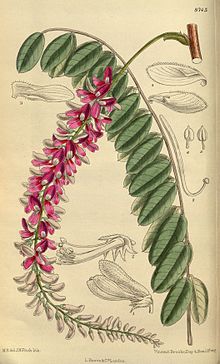Indian Indigo block printed pattern
India is believed to be the oldest center of indigo production and dying in the Old World. To produce enough indigo farmers were forced to give up a percentage of their land to grow indigo. Growing indigo proved to be a lucrative process where nothing was wasted. The leaves produced dye, and were composted enriching the soil with nitrogen. Stems were used as cattle feed and fueled the boilers in indigo factories.
After the indigo leaves were fermented in a vat the liquid is strained off. Next almost naked groups of lower cast men and women walked up and down in slimy waist deep liquid beating and stirring with paddles to oxidize the liquid, turning it from green to dark blue. Nicknamed the "devil's tank" It was a noxious and dangerous process that injured or killed many. Once the aerated indigo was deemed ready the beating ceased allowing the settling and draining off of water leaving behind a thick clay like blue paste. The Indigo paste was collected and dried for dying or trading.




